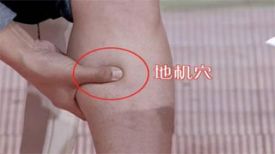
Proper exercise for patients with hyperlipidemia can help improve their blood lipid status. Here are some daily exercise recommendations:
1、 Selection of Sports Type
1. Aerobic exercise:
-Fast walking: Fast walking is a simple and suitable exercise for most patients with high blood lipids. It can effectively improve cardiovascular function, promote blood circulation, and help reduce blood lipids. You can do brisk walking in parks, residential areas, and other environments, with a speed that feels slightly sweaty, slightly rapid breathing, but still able to speak. For example, persist in brisk walking for more than 30 minutes every day and do it at least 5 times a week.
-Slow jogging: For patients with good physical condition, slow jogging is also a good choice. Slow jogging can accelerate metabolism and burn excess fat. At the beginning, you can start with a short jog and gradually increase the running time and distance as your body adapts. But be careful to choose suitable running shoes to protect your joints.
-Swimming: Swimming is a full body exercise that puts less pressure on joints. It can exercise cardiovascular function and improve physical endurance. Patients with high blood lipids can swim 2-3 times a week for 30-60 minutes each time.
2. Strength training:
-Dumbbell exercises: Proper strength training can increase muscle mass, improve basal metabolic rate, help control weight, and lower blood lipids. Dumbbells can be used for simple arm bending, shoulder pushing, and other movements. Starting from a lighter weight, gradually increase the load, and perform 2-3 sets of each action, 8-12 times per set.
-Flat support: Flat support can exercise core muscle groups and enhance body stability. Maintain the tablet support position for 30-60 seconds each time, for 3-4 groups.
-Squatting: Squatting can exercise the leg and hip muscles. Feet shoulder width apart, slowly squat until thighs are parallel to the ground, then slowly stand up. Conduct 2-3 groups, with 10-15 sessions per group.
2、 Exercise intensity control
1. Gradual progression: Patients with hyperlipidemia should start with low-intensity exercise and gradually increase the intensity and duration of exercise. Avoid engaging in overly intense exercise from the beginning to prevent physical injury. For example, in the first week, you can start with 15-20 minutes of brisk walking, and then gradually increase your exercise time by 5-10 minutes per week.
2. Monitor heart rate: Exercise intensity can be monitored through heart rate. Generally speaking, the exercise heart rate of patients with hyperlipidemia should be controlled at 60% -70% of the maximum heart rate. The calculation method for maximum heart rate is 220 minus age. For example, if a 50 year old patient with high blood lipids has a maximum heart rate of 220-50=170, then their exercise heart rate should be controlled between 102-119 beats per minute.
3、 Sports precautions
1. Warm up and relax well: Before exercising, it is important to engage in sufficient warm-up activities such as brisk walking and joint movements to reduce the risk of sports injuries. After exercise, it is necessary to engage in appropriate relaxation activities such as slow walking, stretching, etc. to help the body recover.
2. Pay attention to diet and rest: During exercise, maintain a reasonable diet, control calorie intake, and avoid high-fat and oily foods. At the same time, it is important to ensure sufficient sleep to give the body enough time to recover and adjust.
3. Avoid exercising in bad weather and physical discomfort: In case of bad weather, such as rainstorm, high temperature, etc., outdoor sports should be avoided, and appropriate indoor activities can be selected. If you feel unwell, such as catching a cold, fever, etc., you should pause exercise and wait for your body to recover before resuming.
4. Regular physical examinations and adjustment of exercise plans: Patients with high blood lipids should undergo regular physical examinations to understand their physical condition. Adjust the exercise plan in a timely manner based on the physical examination results and the body's adaptation to ensure the safety and effectiveness of the exercise.


